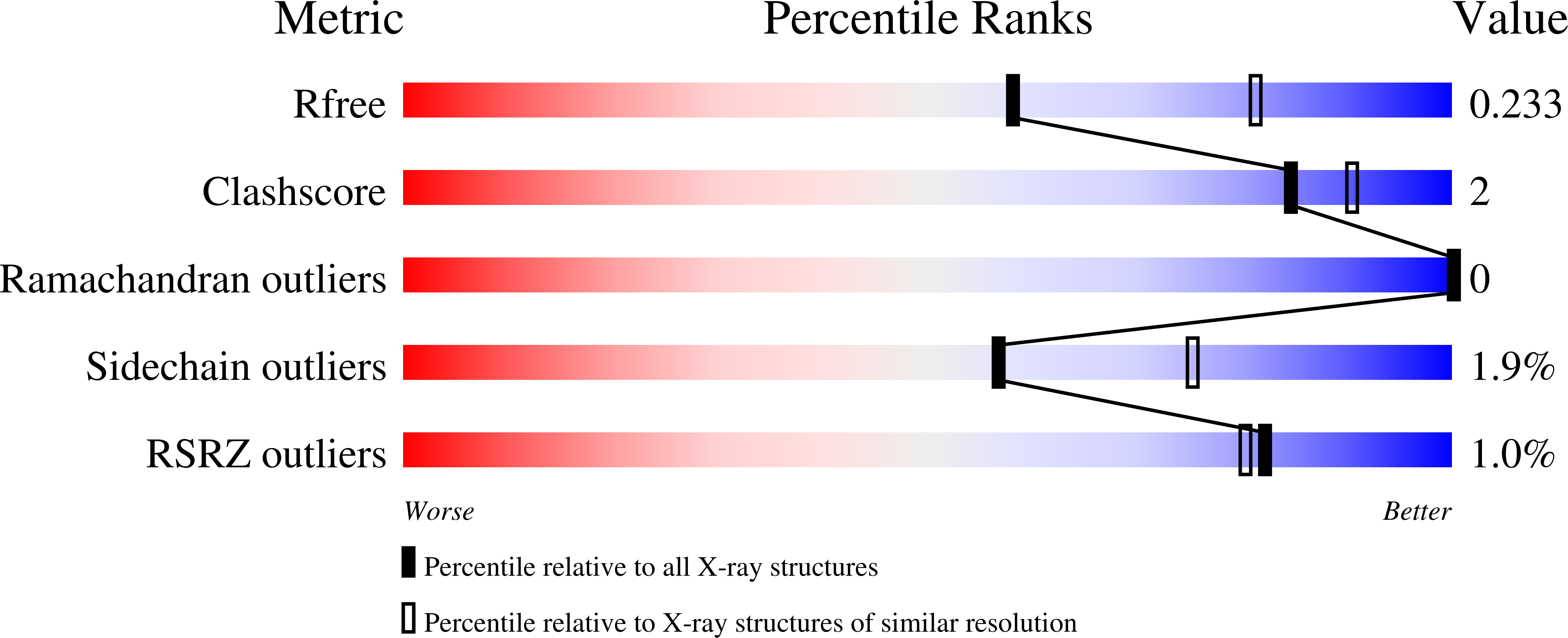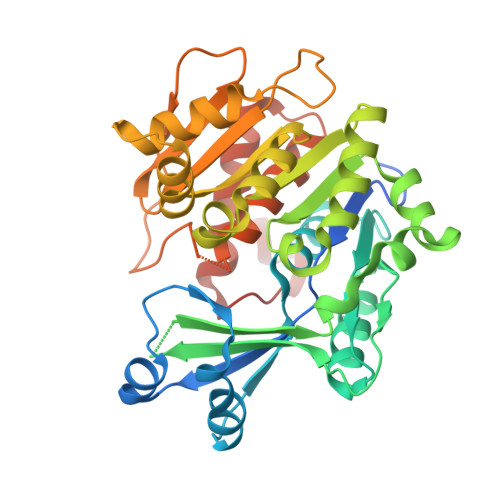Adenosine kinase from Schistosoma mansoni: structural basis for the differential incorporation of nucleoside analogues.
Romanello, L., Bachega, J.F., Cassago, A., Brandao-Neto, J., Demarco, R., Garratt, R.C., Pereira, H.D.(2013) Acta Crystallogr D Biol Crystallogr 69: 126-136
- PubMed: 23275171
- DOI: https://doi.org/10.1107/S0907444912044800
- Primary Citation of Related Structures:
3UQ6, 3UQ9, 3VAQ, 3VAS, 4DC3 - PubMed Abstract:
In adult schistosomes, the enzyme adenosine kinase (AK) is responsible for the incorporation of some adenosine analogues, such as 2-fluoroadenosine and tubercidin, into the nucleotide pool, but not others. In the present study, the structures of four complexes of Schistosoma mansoni AK bound to adenosine and adenosine analogues are reported which shed light on this observation. Two differences in the adenosine-binding site in comparison with the human counterpart (I38Q and T36A) are responsible for their differential specificities towards adenosine analogues, in which the Schistosoma enzyme does not tolerate bulky substituents at the N7 base position. This aids in explaining experimental data which were reported in the literature more than two decades ago. Furthermore, there appears to be considerable plasticity within the substrate-binding sites that affects the side-chain conformation of Ile38 and causes a previously unobserved flexibility within the loop comprising residues 286-299. These results reveal that the latter can be sterically occluded in the absence of ATP. Overall, these results contribute to the body of knowledge concerning the enzymes of the purine salvage pathway in this important human parasite.
Organizational Affiliation:
Centro de Biotecnologia Molecular Estrutural, Instituto de Física de São Carlos, Universidade de São Paulo, Brazil.

















